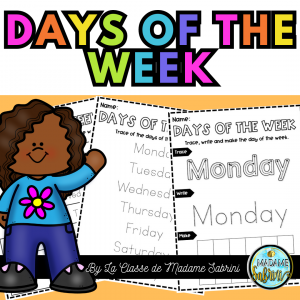This post may contain affiliate links which means I may receive a commission for purchases made through links. I will only recommend products that I have personally used! Learn more on my Private Policy page.
Literacy is a fundamental skill that sets the foundation for success in all aspects of life. As educators, we understand the importance of developing this skill in children from a young age. One effective way to do this is through setting up a literacy center. A literacy center is a designated area in the classroom where students can engage in various activities that foster their reading, writing, and communication skills. In this post, we’ll be walking you through the ABCs of setting up a successful literacy center that engages and challenges young learners.

What is a Literacy Center?
A literacy center is a designated area in the classroom where kids can learn and practice various literacy skills through fun and engaging activities. These centers can be set up for different reading and writing skills, such as phonics, sight words, writing prompts, or even storytelling. The goal of a literacy center is to create an environment that encourages children to develop their language and literacy abilities in a hands-on way. Whether you’re a teacher or a parent, setting up a literacy center can be an excellent way to promote reading and writing skills in children while keeping them excited about learning.
How to Choose the Right Materials
When it comes to setting up a successful literacy center for kids, choosing the right materials is key. You want to ensure that the materials you select will engage and excite your young learners while also helping them to learn and grow.
One of the most important factors to consider when choosing materials is age appropriateness. Be sure to select materials that are suitable for the age and skill level of your students. You don’t want to overwhelm them with materials that are too difficult, nor do you want to bore them with materials that are too easy.
Another important consideration is variety. You want to provide a wide range of materials that cater to different learning styles and preferences. For example, some kids may prefer hands-on activities, while others may enjoy reading or writing. Be sure to include materials that cater to these different learning styles to ensure that all kids are engaged and excited to learn.
Finally, it’s important to choose materials that are fun and engaging. This could include games, puzzles, books, and other activities that capture kids’ attention and make learning feel like play. Remember, the more fun and enjoyable the materials, the more likely kids are to want to learn and participate.
By keeping these factors in mind when selecting materials, you can set your literacy center up for success and ensure that your kids are engaged, motivated, and excited to learn.
How to Set Up Your Literacy Center
Once you’ve chosen the right materials for your literacy center, it’s time to set it up! Here are some steps to get you started:
1. Decide on a location: Choose a quiet corner of the room where your students can focus on reading and writing. If possible, choose a spot with natural light or a cozy seating area.
2. Organize your materials: Make sure your materials are easy to access and well-organized. This can include book bins, writing supplies, literacy games, and other materials specific to the activities you have planned.
3. Create clear labels: Use clear labels to make it easy for your students to find and use materials independently. Label book bins with the reading level or genre, and label writing supplies with clear descriptions.
4. Set up task cards: Use task cards to help guide your students’ independent work at the literacy center. Include instructions for the activity and any materials needed. Laminate the task cards for durability and reuse.
5. Create a routine: Establish a clear routine for your literacy center, including how students will rotate through activities, how they will check in and out of the center, and any rules or expectations.
By setting up your literacy center in an organized and thoughtful way, you’ll create an inviting space where your students can develop their literacy skills and grow as readers and writers.

How to Manage Your Literacy Center
Managing your literacy center is crucial to its success. You want to make sure that your students are engaged and learning during their time at the center. Here are some tips on how to manage your literacy center effectively:
1. Establish rules and routines:
Before you start your literacy center, make sure to establish rules and routines. This will help your students know what to expect and what is expected of them. Set clear rules for behavior, noise level, and sharing materials. Make sure to review the rules with your students regularly to ensure they remember them.
2. Keep materials organized:
One of the keys to managing your literacy center is keeping materials organized. Make sure all materials are labeled and stored in designated areas. This will help your students know where to find materials and where to put them back when they are finished.
3. Monitor student progress:
Check in on your students regularly to see how they are doing. Keep track of their progress and adjust your lessons and activities accordingly. This will help ensure that your students are getting the most out of their time at the literacy center.
4. Provide feedback:
Provide feedback to your students on their progress. Let them know what they are doing well and what they can improve on. This will help motivate them to continue learning and improving.
5. Rotate activities:
To keep your literacy center fresh and engaging, rotate activities regularly. Introduce new activities and books to keep your students interested and excited about learning. This will help ensure that they are always learning and engaged.
Managing your literacy center can be a lot of work, but it is worth it to see your students learning and growing. With these tips, you can set up and manage a successful literacy center that will help your students improve their reading and writing skills.
If you want to learn more about activities to incorporate in your literacy centers, click here now














